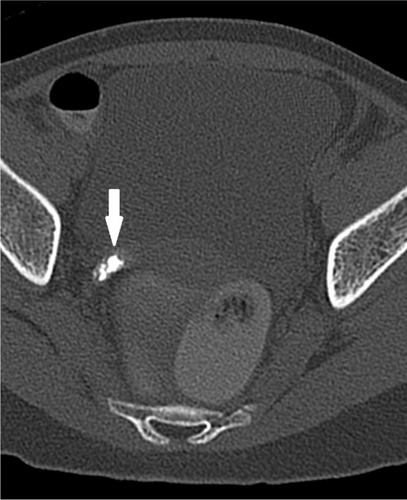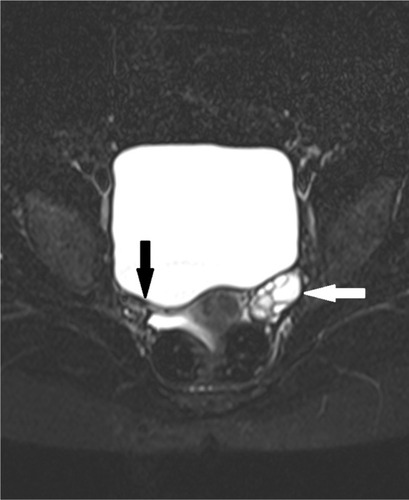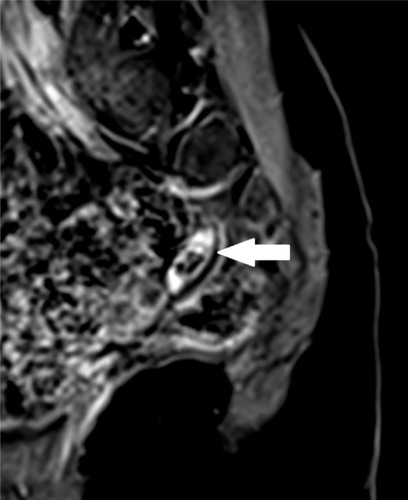Figures & data
Figure 1 Abdominal plain X-rays showing an oval calcific opacity.

Figure 2 Axial computed tomography scan (bone window) image showing oval calcification (arrow) in the right adnexa.

Figure 3 Axial short TI inversion recovery magnetic resonance image showing absent right adnexa and blunt ending right fallopian tube.



